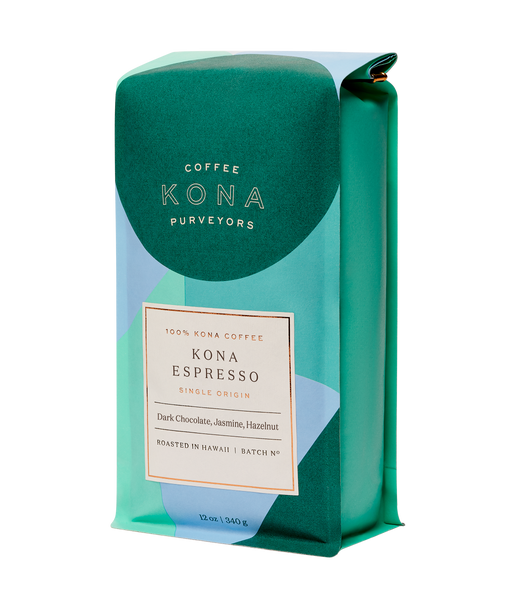The Rising Popularity of Choosing SOE Single Origin Espresso at Home
The Rising Popularity of Choosing SOE Single Origin Espresso at Home
Blog Article
Exploring the Abundant Flavors of Coffee Beans: a Deep Study Espresso and Blended Coffee Beans
When you discover the rich flavors of coffee beans, you reveal a complex globe where each selection brings its very own character to your cup. Comprehending the origins, refining approaches, and toasting methods can transform your coffee experience. As you navigate via the art of coffee and the imagination behind mixed coffees, you'll start to value the subtleties that make each sip one-of-a-kind. What you'll find next could alter the method you appreciate your early morning brew.
The Origins of Coffee Beans: Discovering Terroir and Flavor Profiles
When you take a sip of coffee, you're not just delighting in a drink; you're experiencing an abundant tapestry of flavors formed by the beans' origins. Each region creates special taste profiles affected by environment, soil, and altitude. Beans from Ethiopia commonly burst with brilliant, fruity notes, while those from Colombia often tend to use a balanced, nutty sweet taste.
As you check out various origins, you'll see exactly how terroir-- the environmental factors affecting a plant-- plays an important role - Single Origin Espresso. The exact same coffee variety can taste considerably different relying on where it's expanded
When you consider these aspects, you begin to value the complexity behind your cup. Each sip narrates of the land and the farmers that nurtured the beans. Next time you delight, think about the journey your coffee took before it reached your hands, and enjoy those complex flavors that show its beginning.
Recognizing Coffee: The Art and Scientific Research Behind the Brew
When you believe about espresso, it's not nearly the solid flavor; it's also concerning the strategies that bring it to life. Comprehending exactly how different preparation approaches effect taste can transform your developing experience. Allow's check out the complexities of espresso prep work and discover the distinct flavor profiles that make each cup special.
Espresso Preparation Methods
Espresso preparation is both an art and a science, incorporating exact methods with a deep understanding of coffee. To start, you'll wish to choose top quality, freshly baked beans and grind them carefully for excellent removal (Single Origin Espresso). The work dimension is essential; also rugged, and your espresso will certainly be weak, too fine, and it'll be bitter
Next, tamp the grounds equally in the portafilter to assure uniform extraction. When you lock it into the equipment, purpose for a developing temperature between 190 ° F and 205 °
F.As you draw the shot, watch for the ideal extraction time-- around 25-30 secs. The outcome must be a rich, luscious espresso with a gorgeous layer of crema ahead. With method, you'll master these methods.
Taste Profiles Clarified
The world of coffee supplies a rich tapestry of taste accounts that can elevate your coffee experience. Light roasts typically display bright level of acidity and lively tastes, while dark roasts existing deeper, bolder tones.
Comprehending these accounts assists you choose the ideal espresso for your taste buds. Try out various blends can reveal unusual mixes. For example, a well-crafted mix could harmonize the bright notes of an Ethiopian bean with the rich, chocolatey touches of a Brazilian bean. Embrace the journey of uncovering coffee's varied flavors, and you'll transform your coffee routine right into an interesting adventure.
Processing Methods: Just How They Impact Flavor and Fragrance
While it may seem that the origin of coffee beans is one of the most considerable consider identifying their flavor and aroma, the handling techniques used post-harvest play an equally important duty. You'll discover that these methods can dramatically alter the last taste account of your cup.
As an example, the washed process gets rid of the fruit from the beans before fermentation, frequently bring about a cleaner, brighter flavor. Meanwhile, the all-natural procedure leaves the fruit intact during drying, resulting in a sweeter, fruitier account.
Other approaches, like honey processing, strike an equilibrium, allowing some fruit mucilage to continue to be, providing an one-of-a-kind complexity.
Each handling strategy engages with the beans' inherent attributes, enhancing or silencing particular tastes and aromas. So, when you drink that espresso or mixed coffee, keep in mind that the visit homepage trip from cherry to cup is influenced not just by beginning however additionally by how those beans were processed.
Roasting Techniques: Opening the Full Possible of Coffee Beans
Roasting techniques are vital for exposing the complete possibility of coffee beans, as they change raw, green beans into the aromatic, tasty coffee you take pleasure in. The selection of roasting technique-- light, tool, or dark-- substantially affects flavor profiles.
A slower roast at lower temperatures permits for complicated flavors to create, while a quicker roast can increase anger. By understanding these strategies, you'll expose a world of taste, elevating your coffee experience to brand-new heights.
The Magic of Blended Coffee: Developing Special Flavor Experiences
Producing a distinct taste experience with blended coffee can change your morning routine into an expedition of taste. By integrating different beans from different areas, you can expose a harmony of flavors that boost your cup to brand-new elevations. Each blend deals a distinct account, balancing level of acidity, sweetness, and body to develop something really unique.
When you choose a mix, you're not just choosing a coffee; you're picking a journey throughout diverse landscapes and societies. Trying out various combinations permits you to uncover your personal favorites, whether you appreciate fruity notes or rich, chocolatey touches.

Tasting Notes: Recognizing the Nuances in Your Mug
As you drink your coffee, you might observe a range of tastes dancing on your palate, each exposing the intricacies of the beans. You may taste the brilliant level of acidity reminiscent of citrus or the deep, abundant notes akin to dark delicious chocolate. The sweet taste could stimulate honey or caramel, balancing the overall profile magnificently.
Take notice of the body of the coffee-- does it feel light and airy, or is it full and velvety? The coating, also, offers clues; a sticking around aftertaste might mean nuttiness or flower touches.

Don't neglect to discover the one-of-a-kind features of various origins, as each area presents unique flavors - Single Origin Espresso. For instance, Ethiopian coffees frequently existing fruity notes, while Colombian beans could display a more rounded sweet taste. By recognizing these subtleties, you'll strengthen your gratitude for each and every mug, elevating your coffee experience to brand-new heights

Developing Techniques: Taking Full Advantage Of Flavor Removal for each Bean
When you discover the different brewing techniques, you'll discover that each strategy can substantially impact the taste profile of your coffee. From French press to pour-over, each approach see post essences various substances, enhancing or silencing particular notes. As an example, utilizing a French press permits oils to continue to be in the brew, developing a richer taste, while pour-over stresses clarity and illumination.
Temperature level and grind size also play crucial functions. A coarser work works best for chilly mixtures, while a great grind is excellent for espresso. Try out water temperature level-- between 195 ° F and 205 ° F-- can expose surprise flavors, as well.
Do not forget soaking time; a fast extraction can result in sour notes, while over-extraction might generate bitterness. By changing these variables, you can maximize flavor extraction and genuinely boost your coffee experience. Enjoy the journey of finding what approach best suits your taste buds!
Often Asked Inquiries
What Is the Perfect Water Temperature for Brewing Coffee?
The perfect water temperature level for developing coffee's in between 195 ° F and 205 ° F. If you make use of water that's too hot, you'll over-extract flavors; as well chilly, and you will not draw out sufficient. Aim for that wonderful place for the very best brew!
Just How Does Work Dimension Impact Coffee Taste?
Work size substantially affects coffee flavor. Finer grinds essence extra oils and tastes, causing a bolder taste, while coarser grinds yield a lighter flavor. Readjusting grind size helps you accomplish your preferred coffee profile.
Exist Wellness Conveniences Linked With Alcohol Consumption Coffee?

What Is the Difference Between Arabica and Robusta Beans?
Arabica beans are smoother and sweeter, frequently including fruity tastes, while robusta beans are more powerful with a bitter taste and greater high levels of caffeine content. You'll notice these distinctions in fragrance and brewing experience.
How Can I Shop Coffee Beans for Quality?
To store coffee beans for quality, maintain them in an airtight container, far from warmth, wetness, and light. You'll preserve their flavor much longer if you only grind what you require right prior to brewing.
Checking Out the Rich Tastes of Coffee Beans: a Deep Dive Into Espresso and Blended Coffee Beans.
When you discover the rich tastes of coffee beans, you reveal a complicated world where each selection brings its own personality to your mug.When you take her latest blog a sip of coffee, you're not just enjoying a beverage; you're experiencing a rich tapestry of tastes formed by the beans' origins.Roasting techniques are crucial for disclosing the full possibility of coffee beans, as they transform raw, green beans right into the aromatic, savory coffee you appreciate.As you sip your coffee, you might observe a spectrum of tastes dancing on your palate, each disclosing the details of the beans.
Report this page